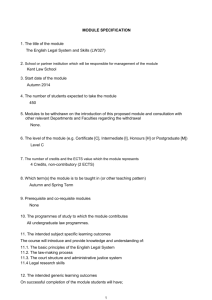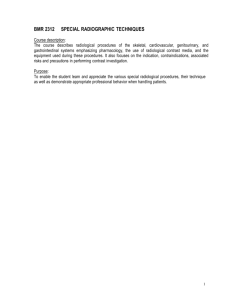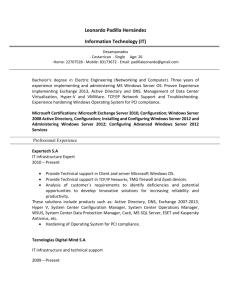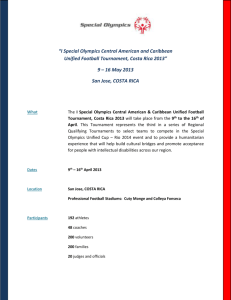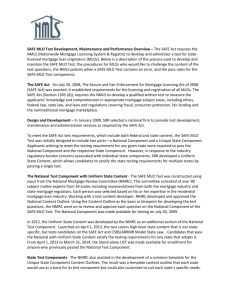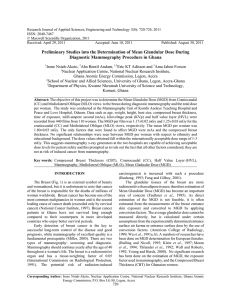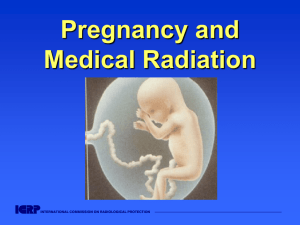European guidelines on quality criteria for diagnostic radiographic
advertisement
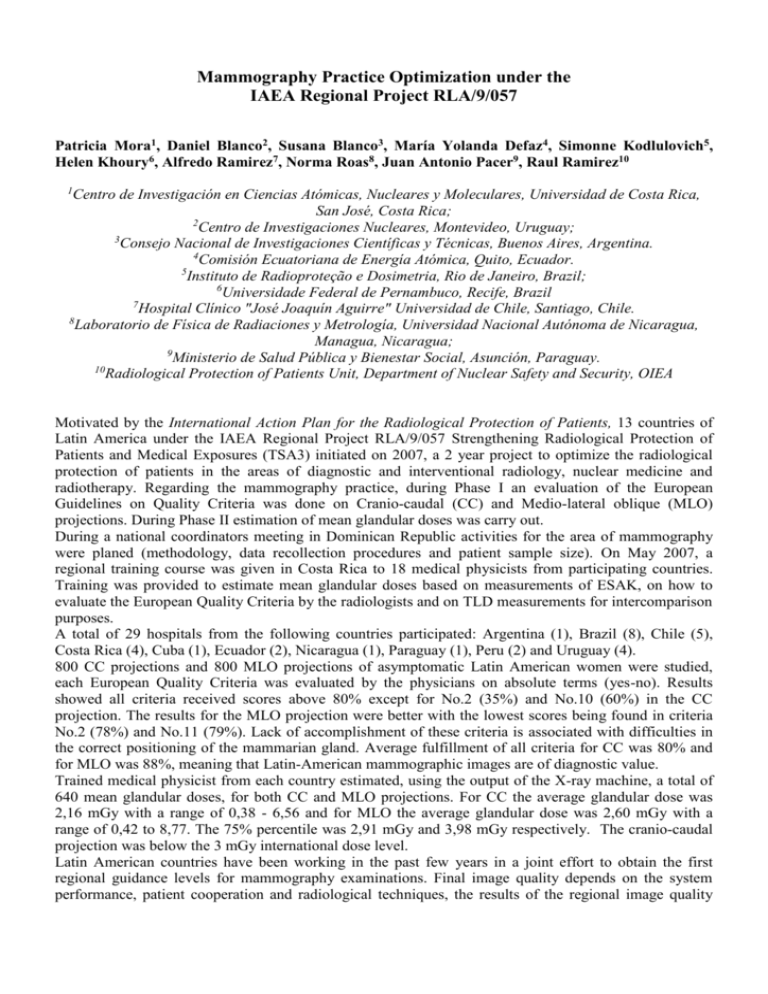
Mammography Practice Optimization under the IAEA Regional Project RLA/9/057 Patricia Mora1, Daniel Blanco2, Susana Blanco3, María Yolanda Defaz4, Simonne Kodlulovich5, Helen Khoury6, Alfredo Ramirez7, Norma Roas8, Juan Antonio Pacer9, Raul Ramirez10 1 Centro de Investigación en Ciencias Atómicas, Nucleares y Moleculares, Universidad de Costa Rica, San José, Costa Rica; 2 Centro de Investigaciones Nucleares, Montevideo, Uruguay; 3 Consejo Nacional de Investigaciones Científicas y Técnicas, Buenos Aires, Argentina. 4 Comisión Ecuatoriana de Energía Atómica, Quito, Ecuador. 5 Instituto de Radioproteção e Dosimetria, Rio de Janeiro, Brazil; 6 Universidade Federal de Pernambuco, Recife, Brazil 7 Hospital Clínico "José Joaquín Aguirre" Universidad de Chile, Santiago, Chile. 8 Laboratorio de Física de Radiaciones y Metrología, Universidad Nacional Autónoma de Nicaragua, Managua, Nicaragua; 9 Ministerio de Salud Pública y Bienestar Social, Asunción, Paraguay. 10 Radiological Protection of Patients Unit, Department of Nuclear Safety and Security, OIEA Motivated by the International Action Plan for the Radiological Protection of Patients, 13 countries of Latin America under the IAEA Regional Project RLA/9/057 Strengthening Radiological Protection of Patients and Medical Exposures (TSA3) initiated on 2007, a 2 year project to optimize the radiological protection of patients in the areas of diagnostic and interventional radiology, nuclear medicine and radiotherapy. Regarding the mammography practice, during Phase I an evaluation of the European Guidelines on Quality Criteria was done on Cranio-caudal (CC) and Medio-lateral oblique (MLO) projections. During Phase II estimation of mean glandular doses was carry out. During a national coordinators meeting in Dominican Republic activities for the area of mammography were planed (methodology, data recollection procedures and patient sample size). On May 2007, a regional training course was given in Costa Rica to 18 medical physicists from participating countries. Training was provided to estimate mean glandular doses based on measurements of ESAK, on how to evaluate the European Quality Criteria by the radiologists and on TLD measurements for intercomparison purposes. A total of 29 hospitals from the following countries participated: Argentina (1), Brazil (8), Chile (5), Costa Rica (4), Cuba (1), Ecuador (2), Nicaragua (1), Paraguay (1), Peru (2) and Uruguay (4). 800 CC projections and 800 MLO projections of asymptomatic Latin American women were studied, each European Quality Criteria was evaluated by the physicians on absolute terms (yes-no). Results showed all criteria received scores above 80% except for No.2 (35%) and No.10 (60%) in the CC projection. The results for the MLO projection were better with the lowest scores being found in criteria No.2 (78%) and No.11 (79%). Lack of accomplishment of these criteria is associated with difficulties in the correct positioning of the mammarian gland. Average fulfillment of all criteria for CC was 80% and for MLO was 88%, meaning that Latin-American mammographic images are of diagnostic value. Trained medical physicist from each country estimated, using the output of the X-ray machine, a total of 640 mean glandular doses, for both CC and MLO projections. For CC the average glandular dose was 2,16 mGy with a range of 0,38 - 6,56 and for MLO the average glandular dose was 2,60 mGy with a range of 0,42 to 8,77. The 75% percentile was 2,91 mGy and 3,98 mGy respectively. The cranio-caudal projection was below the 3 mGy international dose level. Latin American countries have been working in the past few years in a joint effort to obtain the first regional guidance levels for mammography examinations. Final image quality depends on the system performance, patient cooperation and radiological techniques, the results of the regional image quality evaluation provided a tool to Member States to start actions that will improve the final radiological image. Dose assessment are equally important, corrective actions in hospitals have been started if the doses found fall substantially below guidance levels and where the study showed that doses exceeded the guidance levels actions for optimized the protection of patients have also started. KEYWORDS: mammography, guidance levels, image quality criteria, ARCAL, IAEA, optimization, radiation protection of patients.
